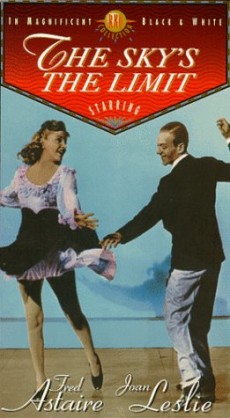
Hollywood On 52nd Street
My Shining Hour and One For My Baby (And One More For The Road) are from a 1943 musical comedy movie titled “The Sky’s The Limit”. Harold Arlen composed the music and Johnny Mercer wrote the lyrics. It starred Fred Astaire and Joan Leslie.
My Shining Hour was introduce by Sally Sweetland and was nominated for an Academy Award for Best Song. It is believed that the opening line “this will be my shining hour” to have been a reference to Winston Churchill’s famous rallying call to British citizens during the war: “This will be our finest hour”.
One For My Baby (And One For More The Road) took two and a half days to shoot, after seven days of full set rehearsal. After a drunken rendition of the song, he furiously tap dances up and down the bar, pausing only to smash stacked racks of glasses and a mirror. The number was first performed in the film by Fred Astaire but popularized by Frank Sinatra.
Sponsored By
www.whatissuitetabu.com
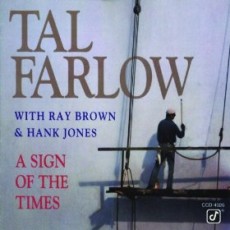
Daily Dose Of Jazz…
Talmage Holt Farlow was born on June 7, 1921 in Greensboro, North Carolina. He didn’t take up the guitar until he was twenty-one but within a year was playing professionally, although he had a reluctance to perform publicly. But, by 1948 he had joined Marjorie Hyams’ band, moved to Red Norvo’s group from ’49 to ’53 and after only six months with Artie Shaw’s Gramercy Five in 1953, Farlow put together his own group, which for a time included pianist Eddie Costa.
Farlow’s extremely large hands led to his nickname “Octopus” spreading over the fret board as if they were tentacles. In 1956 Down Beat magazine critics named him as the very best jazz guitarist in the world. Where other similar players of his day combined rhythmic chords with linear melodies, Tal preferred placing single notes together in clusters, varying between harmonically richened tones based on a startling new technique.
A supreme technician, renowned for his articulation, and smooth relaxed phrasing even at the most daunting tempos, Tal retired from full-time performing in 1958, returning to a career as a sign painter, playing only the occasional date.
He only made one record as a leader during 1960–1975, but emerged a bit more often during 1976–1984, recording for Concord fairly regularly before largely disappearing again. He was profiled in the documentary film, Talmage Farlow, and can be heard leading groups for Blue Note, Verve and Prestige. Guitarist Tal Farlow died of cancer in New York City on July 25, 1998 at the age of 77.
More Posts: guitar
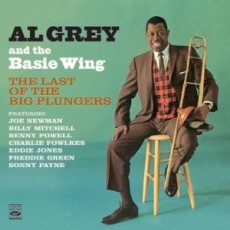
Daily Dose Of Jazz…
Al Grey was born in Aldie, Virginia on June 6, 1925 but grew up in Pottstown, Pennsylvania. After serving in the Navy during WWII, where he started playing trombone, he joined Benny Carter’s band, later moving to Lionel Hampton’s trombone section. After some solo worked he joined Dizzy Gillespie’s big band in ’56 and a year later was touring Europe with Count Basie.
Trummy Young inspired Al’s early trombone style and he developed a wild, strong and full sound. Solos often consisted of short, pronounced phrases with precisely timed syncopation. He became known for his plunger mute technique, later writing an instructional book title “Plunger Techniques”. When playing with the plunger, however, he would produce the most mellow fill-ins and shape melodic answers to the lead voice.
After 1961 Grey performed only occasionally with the Count and apart from leading his own combos, he collaborated with many jazz greats such as Herbie Hancock, Melba Liston, J. J. Johnson, Quincy Jones, Ray Charles, Jack McDuff, Ella Fitzgerald and Frank Sinatra. His trombone skills were also featured on the award-winning soundtrack for The Color Purple.
Al Grey, who passed away on March 24, 2000, greatly contributed to the post-swing era jazz-trombone vocabulary and will be remembered for his charming personality as well as his ability to bond with audiences around the world.
More Posts: trombone
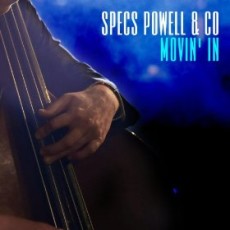
Daily Dose Of Jazz…
Gordon “Specs” Powell was born June 5, 1922 in New York City. He started out musically on the piano but by the late 1930s he became exclusively a drummer. He began in the swing era working with Edgar Hayes in 1939, Benny Carter in 1941-42 and Ben Webster.
He started working as a staff musician for CBS in 1943 and by the early 60s he was lead drummer on The Ed Sullivan Show. He only led one recording session for Roulette Records in 1957 titled “Movin’ In”.
Remaining active until the 1970s, Specs Powell, jazz drummer and percussionist that worked in the bebop and hard bop idioms was honored by the Big Band and Jazz Hall of Fame in 2004.
Though he passed away three years later on September 15, 2007 at the age of 85, Specs Powell selected discography lists his orchestra and big band albums, “Movin’ In” and “Big Band Jazz” and left behind an impressive albeit a selected collection of recordings with Teddy Wilson, Jess Stacy, Red Norvo, Erroll Garner, Shirley Scott, Reuben Wilson, Bernard Purdie and Billy Butler among others.
More Posts: drums
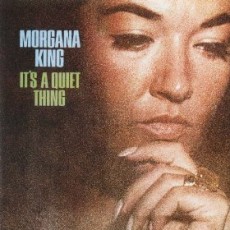
Daily Dose Of Jazz…
Morgana King was born Maria Grazia Morgana Messina on June 4, 1930 in Pleasantville, New York but grew up in New York City at 145th & Amsterdam. Around 13, she began studying acting with the Shubert Theatre family, discovered her vocal talents and received a scholarship to the Metropolitan School of Music.
By sixteen she heard jazz and fell in love with the big bands of Benny Goodman, Harry James but they became overshadowed by Duke Ellington, Erskine Hawkins and Benny Carter. It was during this period she changed her name to Morgana King and her professional career began on a stage in Greenwich Village.
Morgana’s unique phrasing and multi-octave range has made her a formidable interpreter that was expressively evident on her 1956 debut release “For You, For Me, For Evermore”. Her singing career would go on to span four decades with such albums as “It’s A Quiet Thing”, “Wild Is Love” and “Gemini Changes” and headlining clubs, concert halls and hotels throughout the U.S., Europe, Australia and South America with a limited list of musicians she has performed and recorded with.
She is also known for her acting debut playing Carmela Corleone in The Godfather, singing “Eh, Cumpari” and reprising the role in the Godfather Part II. Retiring from show business in 1993, her body of work that includes over thirty albums exhibits her four-octave range, her lyrical signature and her refined ease of evoking a sentiment not just in jazz but also throughout her expanded genres. Morgana King passed away on March 22, 2018 in Palm Springs, California leaving us with her catalogue of music that includes her 1964 signature song “A Taste of Honey”.
More Posts: vocal



